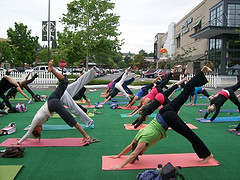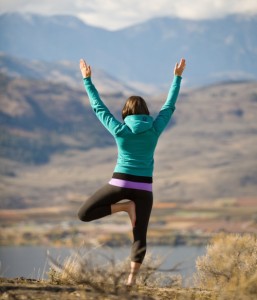Since the 70s, ancient yoga has suffered a certain reputation as belonging to a health-crazed, almost cultish Birkenstock-clad yoga mat-toting hippy lifestyle. Not anymore- current research provides compelling evidence that a daily yoga regimen can be more than just a great opportunity to zone out; traditional Indian yoga is often practiced as a form of preventative medicine.
Yoga is nature’s Advil.
According to Sat Bir Singh Khalsa,PhD, assistant professor of medicine at Harvard Medical School and an associate neuroscientist in the Division of Sleep Medicine at Boston’s Brigham and Women’s Hospital, recommends yoga to ease symptoms such as:
- bodily aches and pains, including back and neck
- chronic headaches
- difficulty sleeping
- obesity
- indigestion
- anxiety and depression
- high blood pressure
- stress
- side effects associated with chemotherapy
- weakness of the immune system
Stress is the source of all ailments.
With practice one may eventually learn how to control the body’s reaction to stress with mental imagery, relaxed breathing and simple yoga movements.
“The best evidence really shows that yoga
is good at reducing stress and helping people cope with
the stress they have. It improves management of stress both
psychologically and physiologically.”
–Sat Bir Singh Khalsa,PhD
Dress the part.
Looking for some good yoga equipment? Shop around for some loose fitting yoga pants and a comfy tee shirt; some mats come encased in a trendy yoga bag. Standing yoga poses require bare feet, but socks are essential for keeping the toes warm during some of the seated yoga meditations.
Don’t just do it.
Just going through the yoga poses without incorporating the breathing techniques does not a proper yoga session make; Karen Sherman of the Center for Health Studies, University of Washington, warns that while physical yoga poses are designed to increase strength and flexibility, they are by no means the main focus of the exercise. The U.S. National Institutes of Health hold that proper yoga exercise must incorporate all of these three basic elements:
- physical poses that may be paused briefly before smoothly flowing into the next movement
- inward focus on breathing for better awareness of the body
- Deep meditative trance with special focus on spirituality
Find an experienced yoga mentor.
Most gyms today offer yoga classes along with their other workout and strength training classes, but Sherman advises everyone to seek out an instructor who has been trained with traditional yoga certification for a more complete, authentic yoga session.
Many forms of yoga exist, such as Hatha Yoga and Bikram Yoga, also known as “hot” yoga; beginners are advised to start out with kundalini, viniyoga or Iyengar yoga before progressing to some of the more advanced yoga moves.
Watch this demonstration of ashtanga yoga, set in scenic India.
Find more info about yoga online at the U.S. National Center for Complementary and Alternative Medicine.
Images:




